2022-3-25
Rina Liu /photo by Jimmy Lin /tr. by Phil Newell
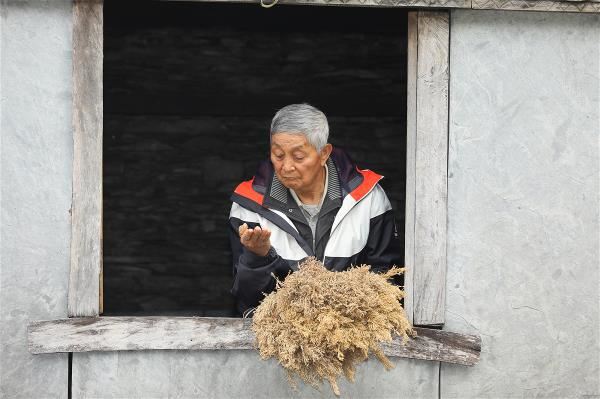
Scientists hope that in their research careers they will make a “once-in-a-lifetime” discovery that can change the world. Dr. Hsing Yue-ie, a distinguished research fellow in the Institute of Plant and Microbial Biology at the Academia Sinica, had just such a standout experience in her more than 50 years of agricultural research when she heard the scientific name of a Taiwanese cereal crop—Eccoilopus formosanus (Rendle) A. Camus (synonym: Spodiopogon formosanus Rendle)—along with an indication of when and where the botanical specimen was collected, at a conference on Rice and Language Across Asia at her alma mater, Cornell University, in 2011.
“When I saw the word formosanus in the scientific name, I felt energized.” Hsing Yue-ie was surprised and excited to learn that there was a “Taiwanese” cereal species that she had never heard of. Only when she followed the matter up after the conference did she discover that a specimen of this species had been sitting quietly at Britain’s Kew Gardens for nearly 120 years with hardly anyone asking after it. “I thought I knew the everyday cereals of our indigenous peoples reasonably well,” says Hsing. But she felt uneasy about this “new” crop: The specimen had been collected more than a century ago, but the plant had never been mentioned in cereal crop research anywhere in the world. Was it perhaps extinct?
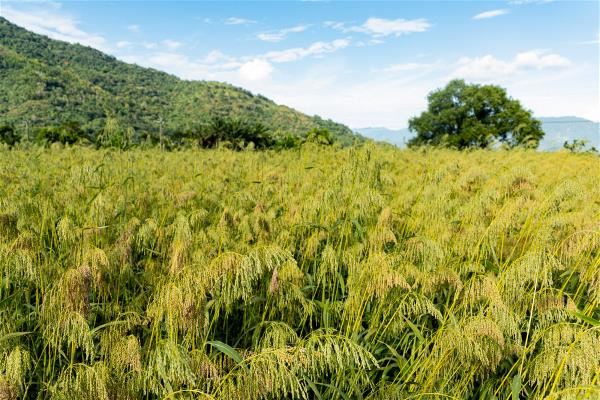
An orphan crop
Dorian Fuller, an expert in ethnobotany and paleobiology at University College London’s Institute of Archaeology, was the first to mention this early Taiwanese cereal in his keynote address at that critical conference. Fuller had learned from a Japanese professor named Emiko Takei that it was an “orphan crop” existing only in Taiwan, but Fuller himself had never seen it and had no picture of it. Although many of the world’s top agricultural and botanical scholars were attending the conference, no one knew anything about this plant.
At the end of 2019 Hsing, leading the only team in the world researching this species, gave a lecture at the University of Cambridge in the UK at which she announced the interim results of their studies. This plant, known as “Taiwan oil millet” (TOM), an endemic Taiwanese species with the scientific name Eccoilopus formosanus (Rendle) A. Camus, is resistant to drought, heat, cold, disease, insect pests, salinity, and inundation, and, as a “C4” plant, is highly efficient in its utilization of sunlight for photosynthesis, and of nitrogenous fertilizer. These characteristics make it one of the plant world’s premier survivors, and suited to growing in adverse environments. However, while the wild oil millet Eccoilopus cotulifer, the likely ancestor of TOM, is naturally edible, it is not easy to harvest because it releases its seeds once they ripen (a process known as “shattering”). In addition, the grains are small and troublesome to husk, so it was not popular as a food. Mostly people planted it at the edges of their fields, to attract birds to eat it instead of their main crops.
“Eventually the wild oil millet grown in Taiwan as a sacrificial field-margin crop underwent natural mutations that inhibited seed shattering and caused the plants to stand up straighter and form fewer branches. Thus Taiwan oil millet was born as a new endemic species.” Hsing believes this happened because the Austronesian-speaking peoples living in Taiwan noticed that if they chose large, healthy-looking seeds to sow, the plants that grew from them would also produce larger grains that were better to eat. The modern idea of crop improvement existed long ago in the minds of our island’s early inhabitants. “Even more impressive is that they knew how to domesticate plants. They practiced artificial selection through more than 3000 years of choosing what was best to eat.” The ancestors of Taiwan’s indigenous peoples successfully developed TOM into a new staple crop.
Studies show that the highly nutritious embryo of a TOM grain accounts for one-third of the grain’s volume. In terms of both protein, and minerals such as zinc, magnesium, and calcium, TOM’s nutritional content is several times greater than in modern staple foods. Also, compared with other cereals it supplies a broader range of “essential” amino acids (ones that the human body is unable to make for itself and must obtain from the diet), helping to promote bodily development and strengthen the immune system.
Between 3500 and 4000 years ago, a large number of indigenous forebears migrated away from Taiwan, taking with them important belongings including seeds. “But they never took TOM with them, and ultimately it became an ‘orphan crop’ existing only in Taiwan. When indigenous people stopped eating it, it disappeared.”
Now TOM is back, and the international academic community believes that it may help solve the global food crisis caused by climate disruption and population growth. It is being called a “superfood,” and is attracting transnational research and interdisciplinary technical collaboration.
Covid-19 has caused major damage to the world economy, with lockdowns fracturing the food supply chain, causing sudden food crises around the globe. With the advent of the post-pandemic era, people are realizing that they must prepare for an unpredictable future.
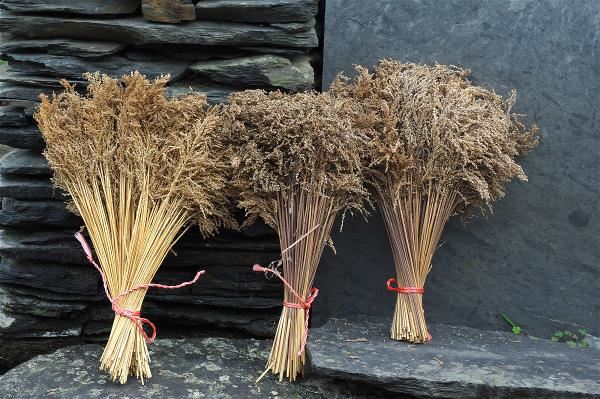
A straw in a haystack
However, “First you have to find living plants, right?” quips Leo Hsu, who has worked as Hsing’s research assistant for nearly 30 years. “Nobody had seen or heard of it, so how could we know how valuable it was? So our initial objectives were to conserve the plant’s germplasm and study its characteristics.”
Hsing Yue-ie asked Hsu, who is on good terms with indigenous communities, to keep an eye out for this “orphan” during his ongoing search for superior upland rice varieties. Not knowing he was about to find a food goldmine, Hsu did his best as a professional botanist to search for TOM.
“The advantage of the scientific taxonomic system is that researchers can basically know a plant’s characteristics just from the name. For example, Eccoilopus [the oil millets] is a genus in the family Poaceae [the grasses],” Hsing explains. “If you want to find a plant you’ve never seen before, you have to rely on basic data to surmise its possible appearance.”
Having taken on this task, says Hsu, “I first went to the herbarium of National Taiwan University to try my luck, and I actually found it there.” But there were few clues to be found from the shriveled and withered specimen, which looked like the silvergrasses (Miscanthus spp.) that grow all over Taiwan. “Fortunately the specimen included ears of grain. In addition, considering that when the specimen was collected more than a century ago the grain was still a food eaten by indigenous peoples, I figured that if I went to indigenous communities and searched for a plant that looked similar and was edible, I would probably find it.”
What the two researchers didn’t yet know was that there were few indigenous people around who could tell them if a possible plant was “edible,” much less people who had actually eaten it and knew how to prepare it.
Hsu will never forget the day he came across six Taiwan oil millet plants. “My original purpose in going to Kingdalruwane [a Rukai indigenous community in Pingtung’s Dewen Village], was to collect the seeds of a new variety of upland rice from an elder to bring back and test its drought resistance.” No one knew that TOM had been quietly growing in this area for the past 100 years. “The elder was late, so I just wandered around and when I got tired I sat down at someone’s doorstep. Then I saw it!” Hsu’s narrative testifies to the power and mystery of fate.
Seeing a plant that looked as if it could be TOM, Hsu asked: “Is that edible?” The farm owner’s reply made it possible for TOM (known in most indigenous languages as some variation on “lumaj”) to again see the light of day and become one of the world’s best hopes for future food security.
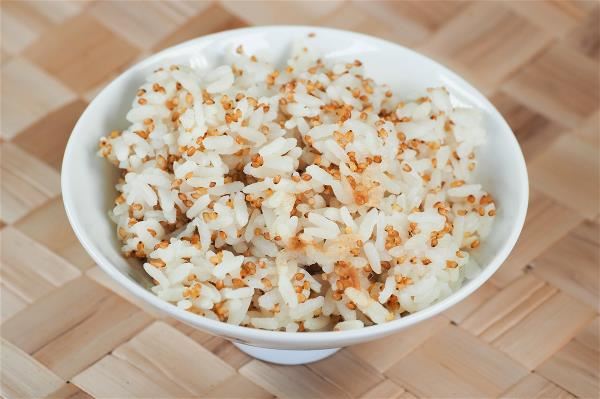
Solving the mysteries of TOM
After having found the “first generation” of Taiwan oil millet plants, Hsing Yue-ie led a research team to study it for nearly eight years. In terms of plant physiology, “By cutting open the leaf I was able to see its structure, and when I recognized the close vascular bundles that are characteristic of C4 plants, I was delighted beyond words.”
“For food crops to be domesticated from wild species to cultivated varieties, you first have to solve the problems of ‘seed shattering’ and then ‘stem lodging’ [stems bending over to lie on the ground]. That is how wild rice was domesticated,” says Hsing, who specializes in studying wet paddy rice and understands this process very well. “If you change crops from a spreading recumbent habit to an erect habit, and if the ears don’t release the grain when it ripens, then the crop can be planted more densely and there will be a greater yield of edible food.”
TOM grains have a fluffy exterior layer, and the leaf sheathes are covered in white powder, so it looks a lot like silvergrass. Silvergrasses are also C4 plants and grow vigorously all over Taiwan. “When TOM is husked the fluff fills the air and makes skin itchy. Moreover, because the grains are small, it is less filling to eat than rice; also, the texture is somewhat hard.” Indigenous people have told Hsing that the reason they gradually stopped eating TOM was that trade made rice easier to come by, and rice has a better mouthfeel.
Using gas chromatography, Hsing’s team discovered that the waxes that TOM secretes in areas from its leaf sheaths to its ear necks are very unusual. “Terrestrial plants all have wax on their outer surfaces to prevent the evaporation of moisture. But very few continuously secrete wax like TOM does. Only certain desert plants do this.” The way that both wild oil millet and TOM secrete wax makes them extremely resistant to drought, diseases, and insect pests. They are very “smart” plants.
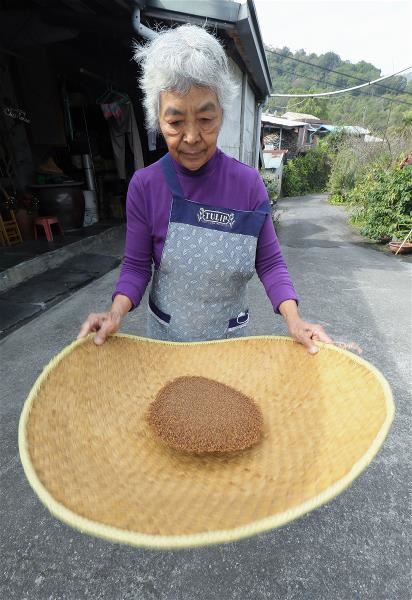
Resilient TOM
“The first thing we wanted to optimize in TOM was to change its sensitivity to day length and to control the growth period to increase the number of annual harvests.” Hsing embarked on a program of interdisciplinary research, working with Chou Kuo-lung (a.k.a. “Mr. Edamame”), Chen Chia-sheng (an expert on Taiwanese forage grasses and cereal crops), and Chen Chen-i (a pioneer in the study of indigenous foods) to improve the plant by breeding.
“There are two main orientations in our breeding program. For human consumption, we want the grains to be bigger and more numerous. For animal fodder, after the whole plant is shredded it must have a good mouthfeel. We hope that through improvement TOM will become more valuable,” Hsing explains.
“As hoped, the whole TOM plant is usable, and it’s gluten-free.” Improvement through breeding not only has increased the size and number of grains in the variety for human consumption, it has sharply reduced the proportion of empty husks. Hsing adds: “The fibers in the animal feed variety of TOM are very delicate; even rabbits love to eat it.”
The resilience of TOM has raised hopes about its future potential. As soon as Hsing released the results of her research, the international academic community took notice and mobilized resources to provide technical assistance. “This future potential includes using TOM for biomass energy, because there is high lipid content in the whole plant.”
Is TOM a suitable candidate for sustainable agriculture? As a scientist, Hsing gives the question careful thought, then nods her head. “I think it is. However, we have not had time yet to do experiments—which will probably take three to five years—to see whether repeated cultivation of TOM on the same plot of land impacts soil fertility.”
Hsing’s eyes light up as she says: “Nonetheless, it is tolerant of a wide range of environments and climates and grows easily. One of its advantages is its adaptability to adverse conditions and poor-quality soils.” If people can work with Taiwan oil millet despite its wild nature, it can be part of an effective solution to the food crisis.
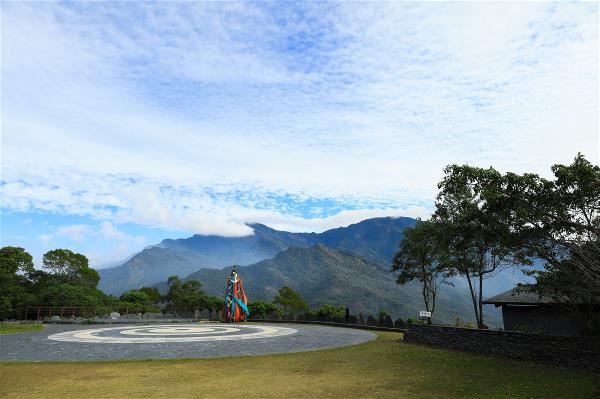
Article and photos courtesy of Taiwan Panorama March 2022





